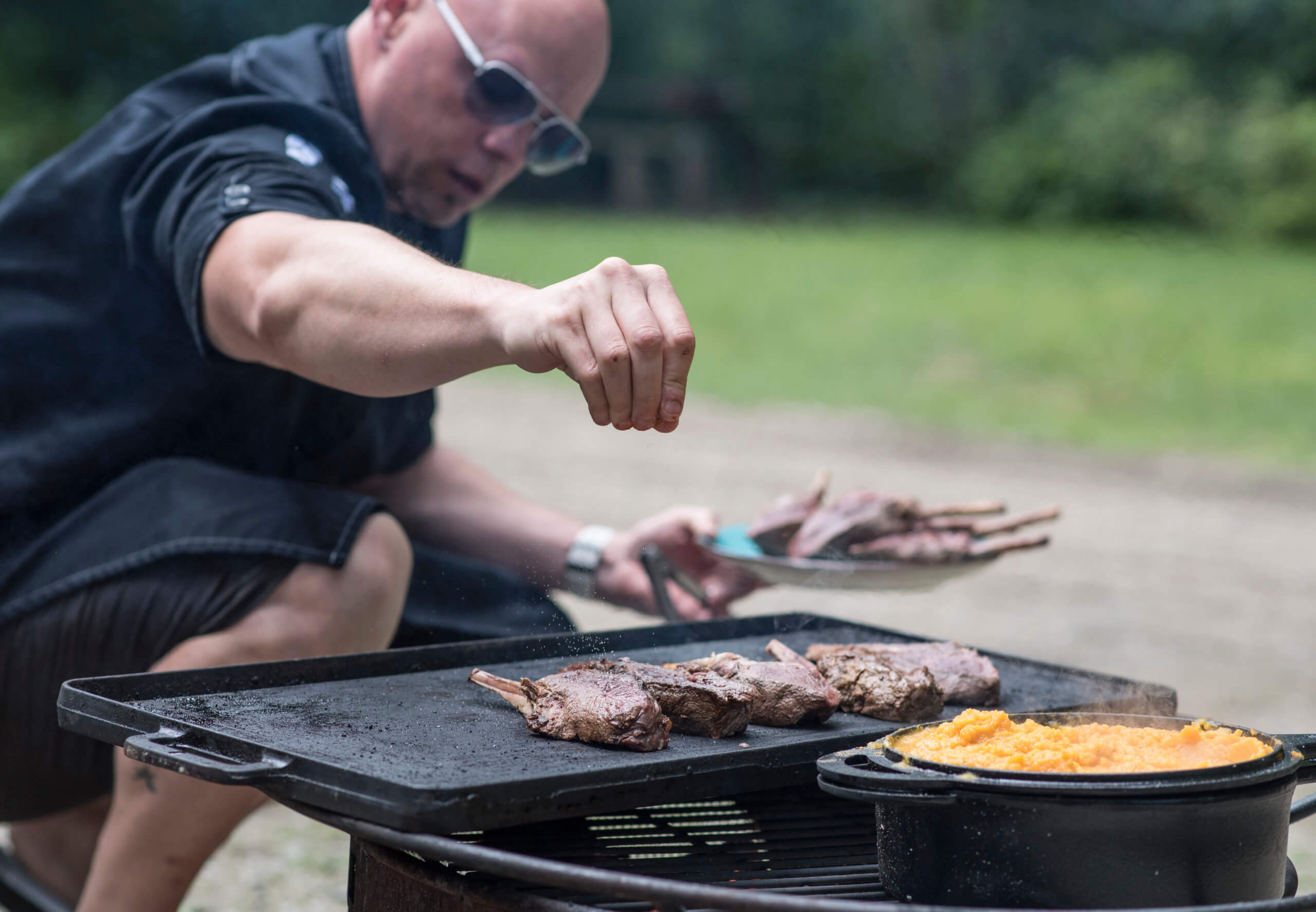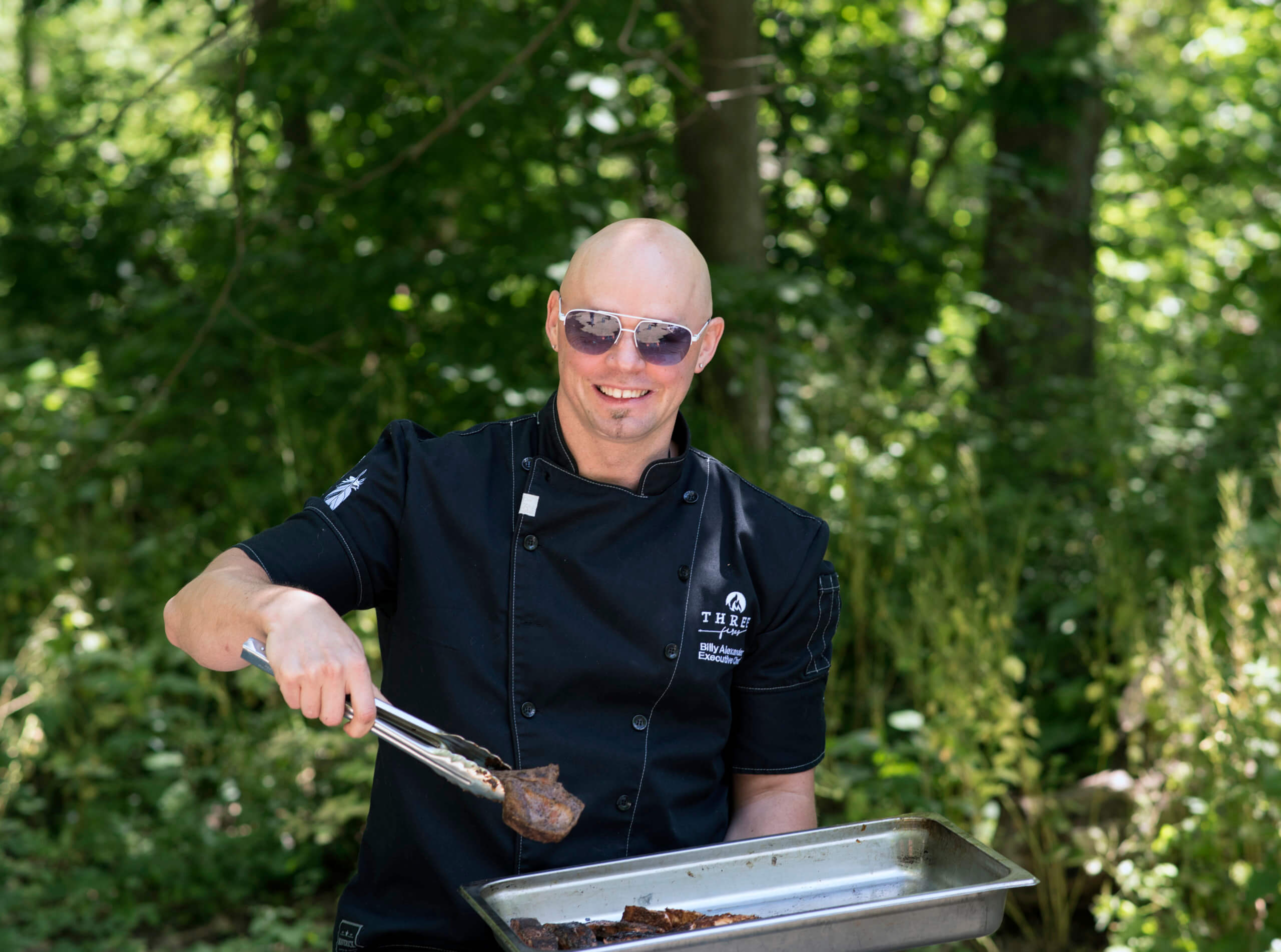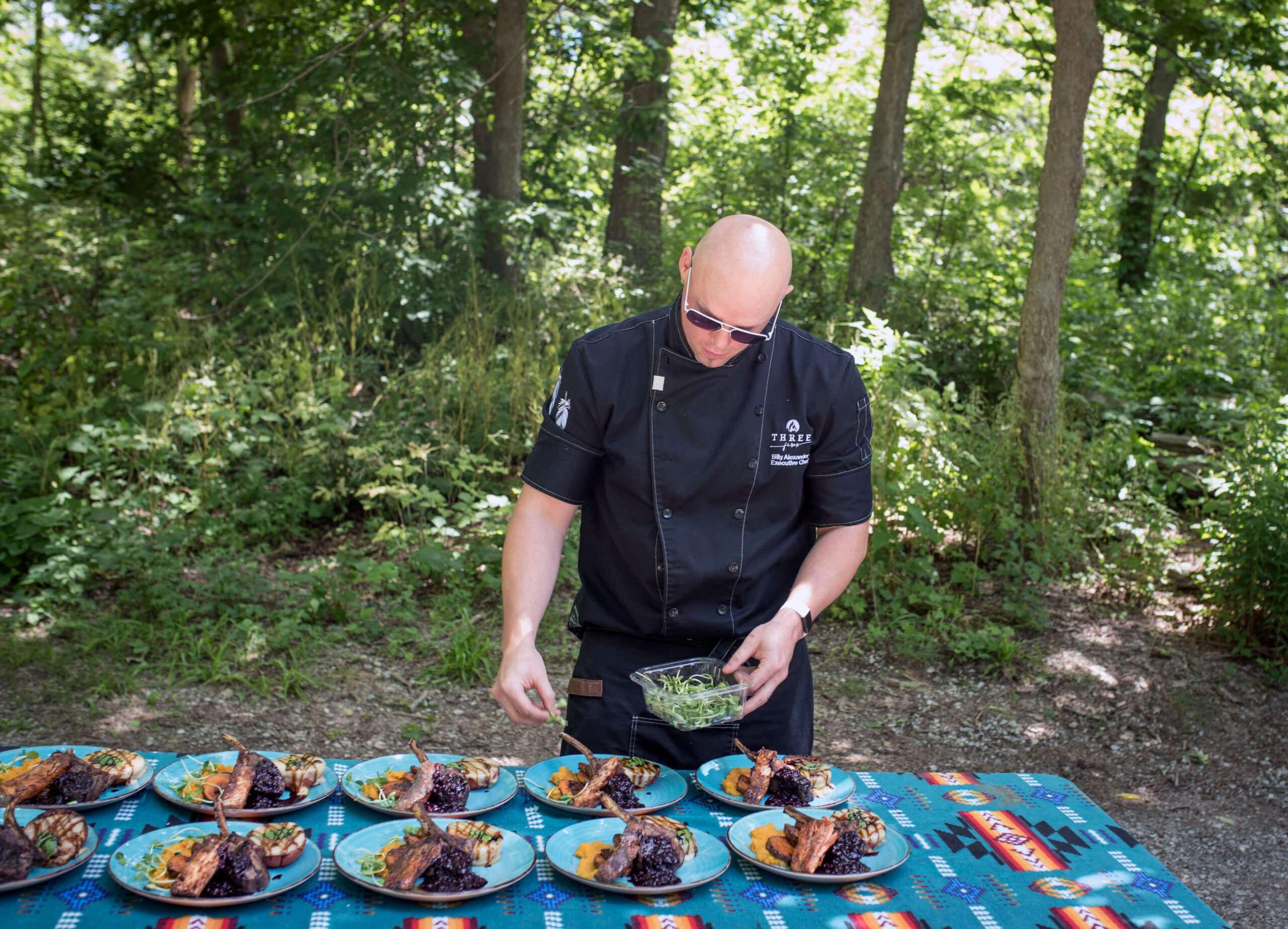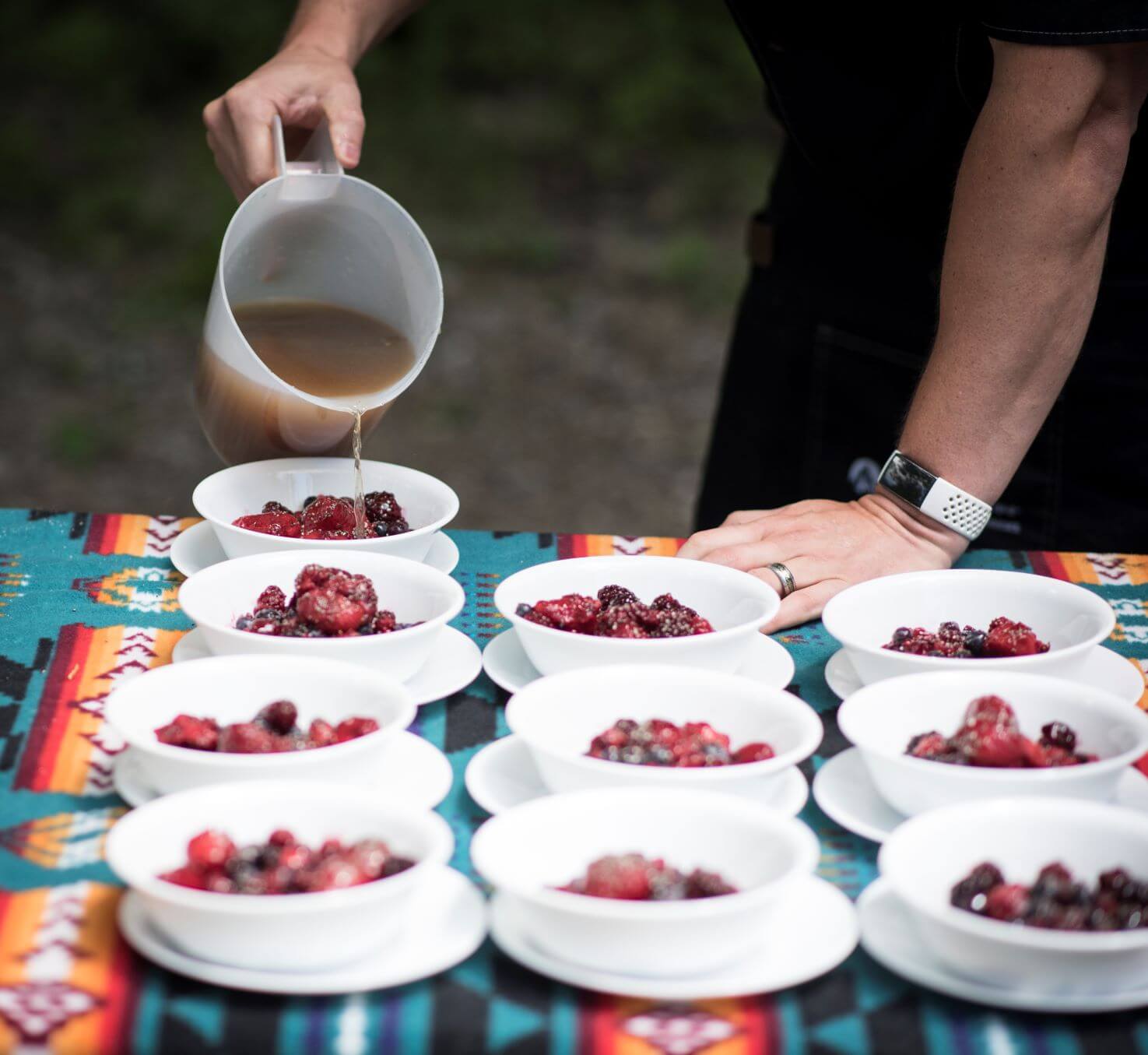Discovering Culture Through Food with Chef Billy Alexander (And His Favourite Dessert Recipe)
“Food is its own universal language.”
You can hear the passion in chef Billy Alexander’s voice as he talks about the intersection of food, culture and tourism. As a chef who has cooked in kitchens around the world, Billy knows the power that food holds.
“We have this ability to sit a bunch of people around a table that think they share nothing in common and through food, not only do we get an opportunity to share ourselves, but by the end of the meal we realize that we have so much in common.”
Billy Alexander is the Director of Programs for the Culinary Tourism Alliance. A globally-recognized Indigenous chef, Billy spent his early career travelling the world before returning to Canada to cook the food of his own culture. He is a social advocate and the Founding Chair of both Indigenous Culinary of Associated Nations and Ontario Indigenous Food Tourism Table. He’s received accolades aplenty, including the Canadian Culinary Excellence Award and Calgary’s Top 40 Under 40 Most Influential People In The City.
Billy’s had an incredible career but he is excited for this new chapter, a chance to help rebuild Ontario’s culinary tourism post-pandemic and to create more platforms where other chefs can tell their own stories about their own cultures through the food they make.
“The sharing of your culture through food creates a situation for an interactive experience for people to learn about others,” he says. “There’s something amazing that happens when we learn about others — we actually often realize many more things about ourselves and that’s where the true growth happens.”
Storytelling Through Food
It speaks a lot to Billy’s upbringing that his favourite thing to cook is wild game. By the time he was six years old, Billy was already learning to cook and work with animals. He spent much of his childhood hunting, fishing, growing food in a huge garden and living off the land.
“I don’t think I really stepped into my first grocery store until I was about 13 or 14 years old,” he says.
Growing up with a reliance on the land for food was a powerful lesson in the true value of a meal and the story that each ingredient tells. One of his favourite meals to cook, for example, is a smoked venison tenderloin with a blueberry and wild mint sweetgrass sauce served with smoked maple and sage sweet potato medallions. Each ingredient in that meal tells a story of his culture.
Billy says the worst thing we can do is take for granted what we are eating.
“Often food gets put down in front of us because we’ve told ourselves we need to eat but a lot of those stories and the hundreds, and sometimes thousands, of decisions that have gone into why that dish was prepared that way, or where it has come from or the partnerships it took to make it come to fruition, gets lost,” he says. “I always think there’s an interesting way to highlight these aspects.”
A Movement For Indigenous Cuisine
“Something inside me was missing,” Billy tell me, speaking about the years he spent cooking the food of other cultures. For a long time he didn’t believe that anyone would be interested in eating Indigenous food.
“When you talk about the history of Indigenous people within Canada, you realize it’s not the same as growing up Polish, Ukrainian, Italian, German. It’s not the same because there was not this necessary roadblock stopping you from learning about your own culture,” he says. “It makes sense that when you grow up fighting to learn your own culture and there’s been some things set up for you to not be able to learn — whether that’s through language barriers or culture or quite literally the stripping of it — of course you don’t grow up with the confidence in your own culture that makes you think, ‘hey, I should share this.'”
It was a stint in New Zealand — where Billy says Indigenous culture is not just celebrated, but makes up the fabric of the country — that he realized he need to get home to Canada and showcase his cuisine to the world.
“I was done cooking other people’s food.”
Billy began his personal Indigenous food movement in Calgary, at an Indigenous-owned resort that had not been showcasing Indigenous food. Within two weeks of taking over the kitchen, he had revamped the menus to feature and celebrate Indigenous cuisine. It felt incredible. Then he began to think about his roots and the community ecosystem in which he was raised and he started reaching out to other Indigenous chefs, hoping to create a community and start a movement. Indigenous Culinary of Associated Nations was born out of that effort.
In the years to come, Billy would use his industry experience to continue to market Indigenous cuisine. He eventually returned to Ontario and did some incredible work with the Caldwell First Nations before taking on this current role.
Billy has seen a huge change in Canadian interest of Indigenous cuisine since Canada 150, where for the first time, the role Indigenous peoples played in Canada’s history was highlighted on a national stage.
“That allowed people to ask questions that I think a lot of people felt they couldn’t ask before and while that wasn’t the saving grace of it, but it was the beginning,” he says. Since then, more and more Indigenous restaurants have begun to pop up and have created a catalyst for Canadians to learn about Indigenous culture.
“Food has been an excellent point for me, and for other Indigenous chefs, to showcase some of our familial teachings or cultural teachings and also highlight how each of us are continually learning every day,” he says. “I think the support now is higher than it’s ever been. Do I think it’s high enough? No. But I think it’s trending in the right direction.”
Next Steps For Culinary Tourism
While Billy enjoys working in restaurants, his true passion is building culinary tourism through storytelling and he is excited at the opportunity to rebuild a strong industry after the devastation of the Covid pandemic.
“Things are changing,” he says. “People do want to know where their food comes from, they do want to get behind something positive…And I can think of no other activity that we do three times a day at a minimum that has the same impact on our physical and social environment that food has.”
He hopes that through the Culinary Tourism Alliance, he can help those in the industry feel excited about the future.
Billy’s Favourite Dessert Recipe: Iced Berries with Honey Sweetgrass & Mint Cider
Cider: Ingredients and Instructions
- Apples: 4 pounds (or about 8 medium), any variety
- Orange: Sliced into 1/4-inch slices 9no need to peel)
- Cinnamon: use 4 small or 3 medium cinnamon sticks
- Whole cloves: use 2 tsp or 1 tbsp for extra spice
- Nutmeg: using a whole nutmeg is optional, but adds great flavour
- Honey: use 1/2 cup to 3/4 cup, or add to your desired sweetness
- Sweetgrass: use 1 braid lightly torched on the outside
- Mint: 1 bunch mint stems trimmed but not removed
- Water: start with 10 cups and add more to dilute if desired
- Roughly chop apples after removing cores. No need to peel.
- Place apples in a large pot. Slice your orange in coins and add it to the pot, again, no need to peel the skin.
- Lightly torch sweetgrass with a lighter or torch, just until outsides are lightly browned (you will smell the sweetgrass now). Add to pot.
- Add trimmed mint to pot.
- Add spices: cinnamon sticks, whole nutmeg (if using), whole cloves
- Drizzle the top with honey, then pour in the water
- Bring the pot to a boil, then reduce heat and lightly boil uncovered for one hour. Reduce heat to medium/low, cover, and simmer for 2 hours. The cider should turn a light amber colour. Add more honey or water to taste. It should be sweet and spicy.
- Strain your cider through a fine mesh colander or through a cheesecloth and squeeze out as much juice as you can. After straining, re-add the sweetgrass braid back into the cider for extra flavour.
- Serve hot over frozen iced berries (see below).
Iced Berries: Ingredients and Instructions
- Berries: 2 lbs of frozen berries, any variety (Billy likes to use a mix of strawberries, raspberries, blueberries and blackberries)
- Black Chia Seeds: 1/4 teaspoon
- Whipped Cream
- Remove berries from freezer and split between bowls evenly (this amount of berries will yield 4 portions)
- Ladle hot cider over frozen berries until about halfway up berries (hot cider will begin to thaw berries creating a hot and cold sensation as they are mixed together)
- Finish by topping with whipped cream and black chia seeds.
This story originally appeared on October 12, 2021 and was updated on August 5, 2022.








